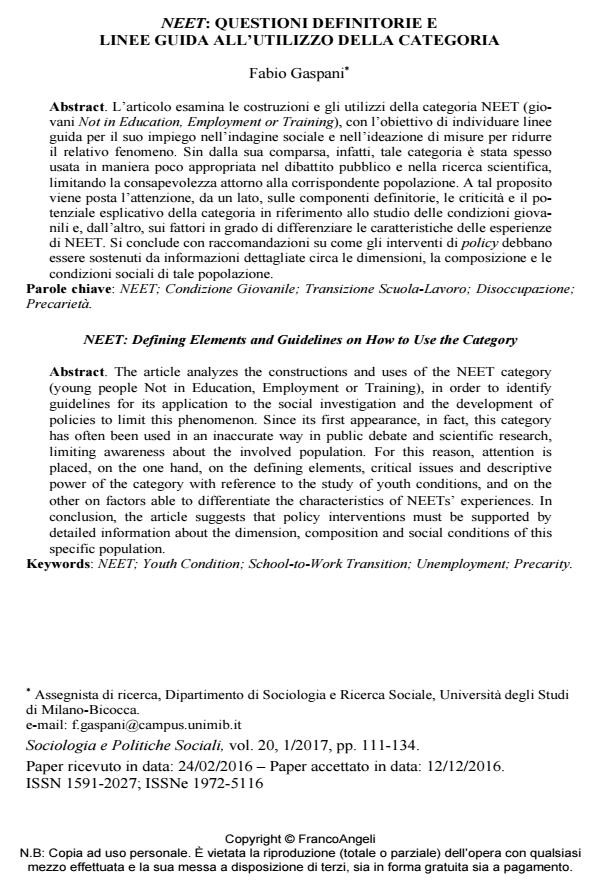NEET: Defining Elements and Guidelines on How to Use the Category
Journal title SOCIOLOGIA E POLITICHE SOCIALI
Author/s Fabio Gaspani
Publishing Year 2017 Issue 2017/1
Language Italian Pages 24 P. 111-134 File size 275 KB
DOI 10.3280/SP2017-001006
DOI is like a bar code for intellectual property: to have more infomation
click here
Below, you can see the article first page
If you want to buy this article in PDF format, you can do it, following the instructions to buy download credits

FrancoAngeli is member of Publishers International Linking Association, Inc (PILA), a not-for-profit association which run the CrossRef service enabling links to and from online scholarly content.
The article analyzes the constructions and uses of the NEET category (young people Not in Education, Employment or Training), in order to identify guidelines for its application to the social investigation and the development of policies to limit this phenomenon. Since its first appearance, in fact, this category has often been used in an inaccurate way in public debate and scientific research, limiting awareness about the involved population. For this reason, attention is placed, on the one hand, on the defining elements, critical issues and descriptive power of the category with reference to the study of youth conditions, and on the other on factors able to differentiate the characteristics of NEETs’ experiences. In conclusion, the article suggests that policy interventions must be supported by detailed information about the dimension, composition and social conditions of this specific population.
Keywords: NEET; Youth Condition; School-to-Work Transition; Unemployment; Precarity
- Persistency in the NEET state: a longitudinal analysis Dalit Contini, Marianna Filandri, Lia Pacelli, in Journal of Youth Studies /2019 pp.959
DOI: 10.1080/13676261.2018.1562161
Fabio Gaspani, Neet: questioni definitorie e linee guida all’utilizzo della categoria in "SOCIOLOGIA E POLITICHE SOCIALI" 1/2017, pp 111-134, DOI: 10.3280/SP2017-001006